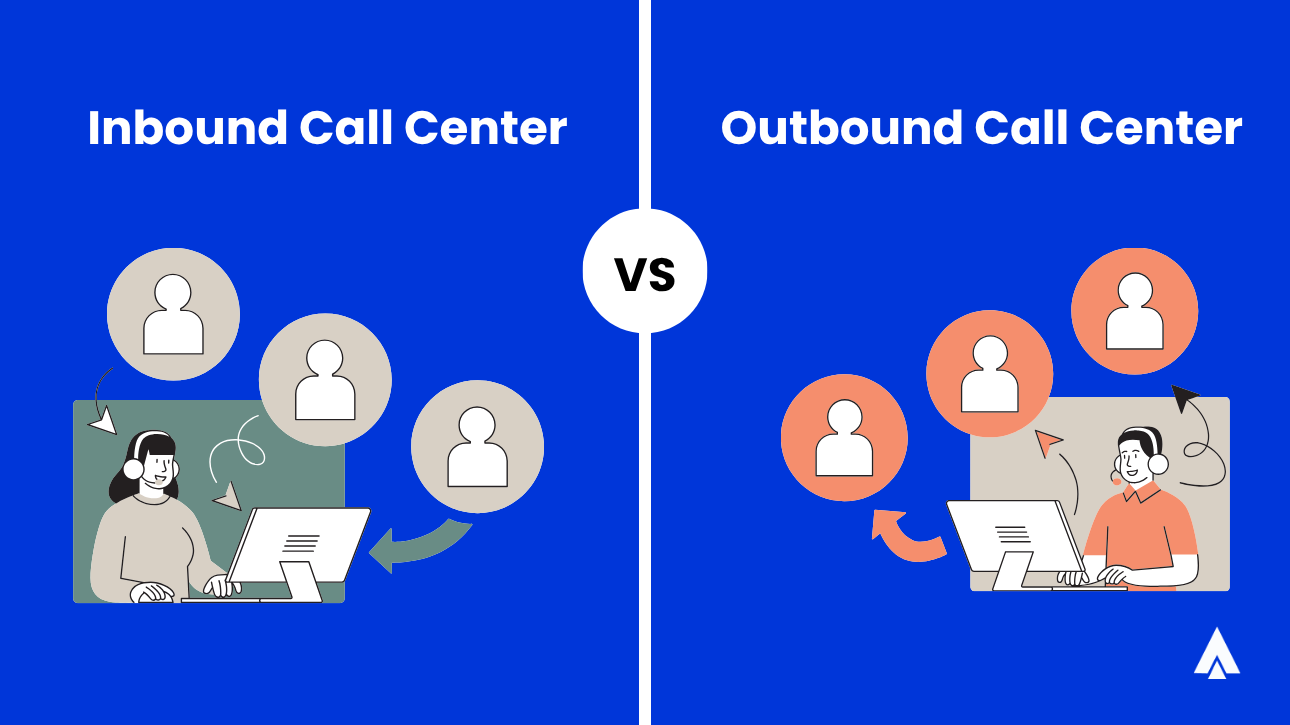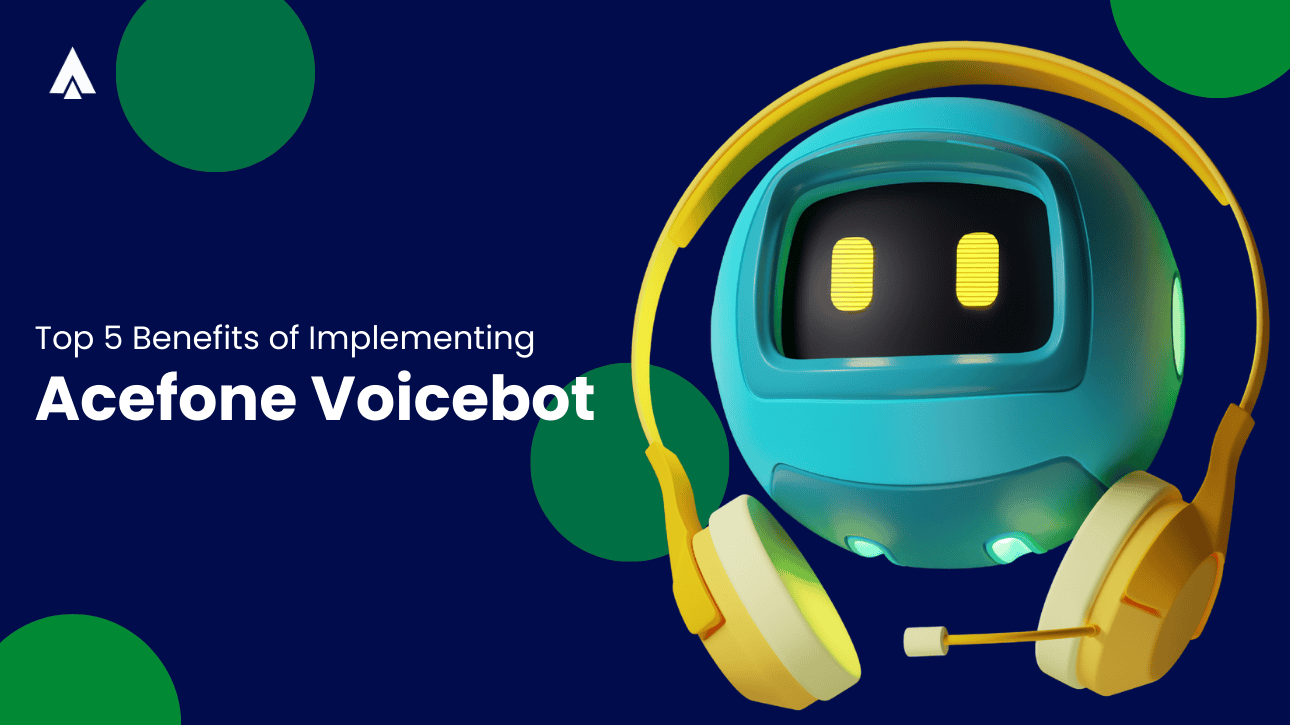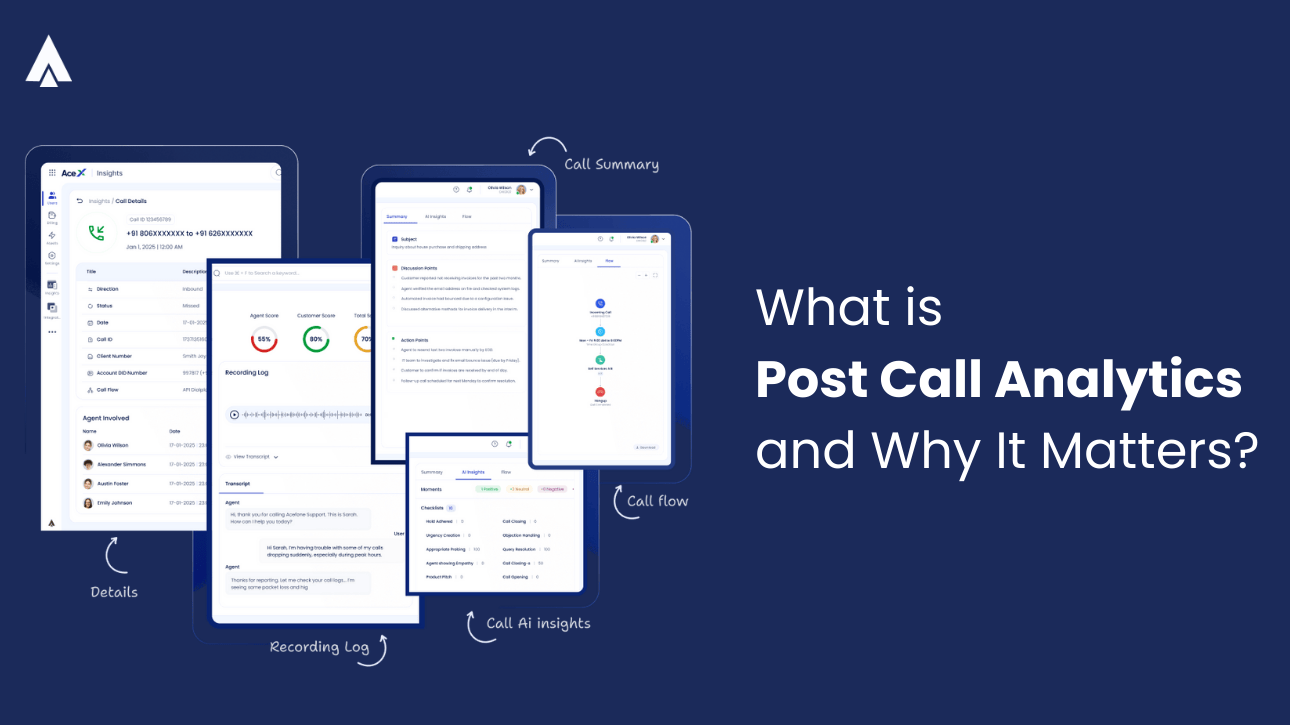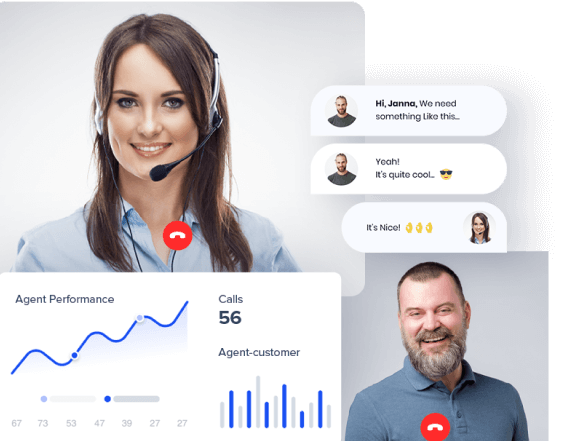In an age where business communication is dominated by chatbots, you might assume that customers rarely pick up the phone to contact businesses. But the reality is quite the opposite. Calling remains one of the most common ways people seek support.
This trend holds true even for the popularly text-preferring millennials and Gen Z. According to a McKinsey study, 71% of younger customers still prefer to make phone calls when engaging with businesses. This is why it is important to strengthen your voice communication capabilities by setting up a dedicated inbound and outbound call center.
Wondering what sets an inbound and an outbound call center apart?
We’ve got you covered. Here are the key differences between Inbound and Outbound call center.
What is an Inbound Call Center?
An inbound call center focuses on handling incoming calls from both existing and potential customers. Inbound agents handle customer service and technical support. However, their responsibilities may also include managing sales queries, processing subscription changes, updating CRM records, onboarding new customers, and collecting feedback.
Alongside live agent support, inbound contact center software rely heavily on self-service tools like Interactive Voice Response (IVR) systems and AI-powered virtual agents. They use technologies like Natural Language Processing (NLP) to resolve routine queries independently with voicebots. For more complex queries, they use smart routing to direct calls to the most suitable agent.
Whether the issue is resolved through automation or by an agent, the core objective of inbound call center remains the same: to deliver fast, efficient support while ensuring a great customer experience.
Read Our Blog: What is an Inbound Call Center?
What is an Outbound Call Center?
An outbound call center is focused on making outbound call strategy to both existing customers and new prospects. Here, agents are primarily involved in sales-related tasks such as cold calling, lead qualification, product promotion, and subscription management. They also handle proactive customer outreach, offering support follow-ups, gathering feedback, and conducting surveys.
In addition to live agent interactions, outbound call center often use automation tools like predictive dialers, voicemail drops, and lead management systems. Some also incorporate AI tools to analyze customer data, segment lead lists, and personalize outreach strategies. This helps ensure agents connect with the most relevant contacts.
Learn more in our guide on what is an auto dialer?
The key goal of an outbound call center software is to drive engagement, build relationships, and boost revenue. All this, while maintaining a positive and professional customer experience.
Read Our Blog: What is an Outbound Call Center?
Inbound vs Outbound Call Center: 6 Key Differences
Inbound contact center handle incoming calls, while outbound contact center initiate calls to customers and prospects. With the former, you can typically handle customer service and support; the latter is geared toward lead generation, sales outreach, and follow-up calls. You can also use hybrid call centers that manage both incoming and outgoing calls.
Now that you understand each of them in detail, let’s look at the key differences.
| Category | Inbound Call Center | Outbound Call Center |
| Purpose | Handles incoming customer calls related to service, support, product queries, onboarding, or complaints. | Makes outgoing calls for sales, promotions, lead generation, surveys, reminders, and payment collections. |
| Interaction Initiation | Calls are initiated by customers needing help or information. | Calls are initiated by agents to connect with leads or customers proactively. |
| Key Metrics | First Call Resolution (FCR), Avg. Handling Time, CSAT, NPS, Wait Time, Retention Rate. | Conversion Rate, Cost per Acquisition, Hit Rate, Lead Response Time, First Call Close, Occupancy Rate. |
| Primary Focus | Delivering fast, effective customer service, and technical support. | Driving sales, generating leads, qualifying prospects, and collecting feedback. |
| Technologies Used | IVR, ACD, Call Queuing, Call Monitoring, Skill-Based Routing, Real-Time Dashboards. | Predictive/Power/Preview Dialers, Click-to-Call, Custom Caller ID, Lead Management, Call Disposition Tools. |
| Nature of Operations | Reactive responding to customer issues or inquiries. | Proactive reaching out to engage potential or current customers. |
Inbound vs Outbound Call Center: What’s Right for You?
Here are the detailed differences between Inbound and Outbound call center:
1. Purpose
The core objective of an inbound call center is to help customers resolve challenges and answer queries. The problems could range from inquiries and technical troubleshooting to requesting account-related support. The aim is to resolve concerns and enhance customer satisfaction. Many businesses now rely on cloud contact center providers to handle these interactions efficiently and at scale.
Whereas, outbound call center are more proactive. Your team can connect with leads or existing customers to promote new offerings, follow up on previous interactions, schedule appointments, send reminders, and collect payments.
2. Interaction Initiation
In inbound call center, the customer initiates the conversation, usually to resolve an issue, ask a question, or explore a service. In outbound call center, you might initiate contact, often to sell, follow up, or collect feedback.
If you want to learn more about the contact center, visit us at Call Center Software.
3. Key Metrics
Metrics vary significantly based on the nature of the call center.
Inbound Call Center KPIs focus on service efficiency and customer satisfaction, such as:
- First Call Resolution: Measures how often customer issues are resolved during the first call, without the need for follow-ups.
- Average Handling Time: The average time an agent spends on a call, including talk time and after-call work.
- Average Wait Time: The average time customers spend waiting in a queue before speaking to an agent.
- Call Abandonment Rate: The percentage of callers who hang up before their call is answered by an agent.
- Customer Satisfaction Score: A rating based on post-call surveys that reflects how satisfied customers are with the support received.
- Net Promoter Score: Gauges customer loyalty by measuring how likely customers are to recommend the company to others.
- Customer Retention Rate: The percentage of customers who continue to do business with a company over a specific period.
Outbound Call Center KPIs are more performance and results-driven, including:
- Conversion Rate: The percentage of leads or calls that result in a successful sale or desired action.
- Cost Per Acquisition: The average cost incurred to acquire a new customer, including marketing and operational expenses.
- Hit Rate: The ratio of successful connections (e.g., sales or appointments) to the total number of outbound calls made.
- First Call Close: Measures how often an agent successfully closes a deal or resolves a query in the very first call.
- Lead Response Time: The average time it takes for an agent to respond to a new lead after initial contact is made.
- Lead Qualification Rate: The percentage of leads deemed suitable or sales-ready based on predefined criteria.
- Agent Occupancy Rate: Indicates how much time agents spend on call-related activities versus being idle, showing overall utilization.
Want fewer idle hours and more agent productivity? Learn how reducing Call Center Shrinkage can make your outbound team as effective as your inbound one. Find out more now.
4. Primary Focus
Inbound contact center are service-driven, aiming to resolve concerns, answer questions, and provide support efficiently. They play a crucial role in retaining customers, maintaining your brand reputation, and building personalized agent-customer relationships through empathetic, informed interactions.
Outbound contact center are sales and growth-focused. Their primary objective is to expand your company’s reach.
Equipped with advanced call center phone systems features, they help your team acquire new customers, generate qualified leads, and increase revenue through upselling or cross-selling.
5. Technologies Used
Inbound call center depend heavily on powerful call management and customer service tools. Common technologies include:
- Interactive Voice Response (IVR): An automated system that interacts with callers through voice or keypad inputs to route calls or provide self-service options.
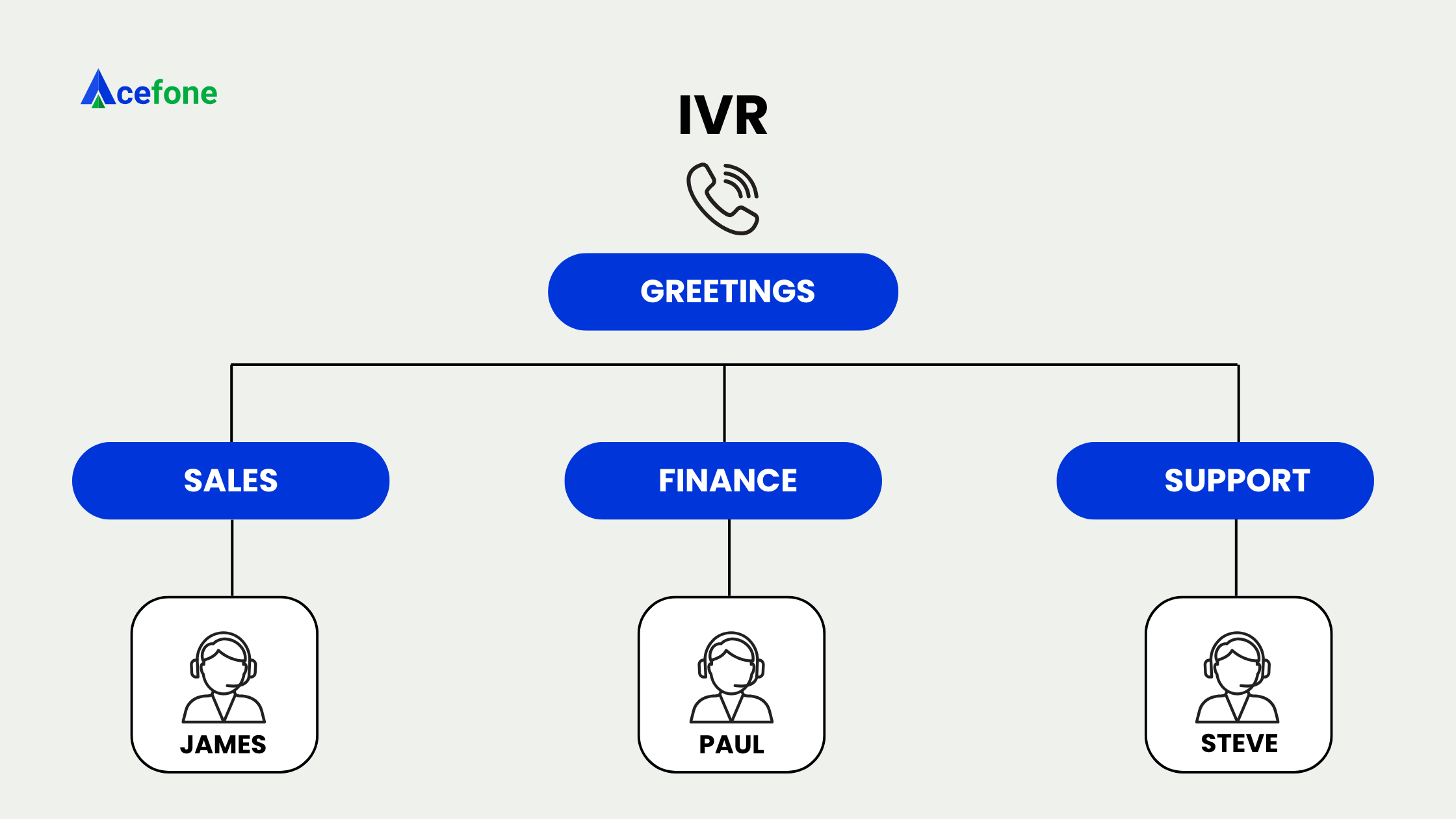
- Automatic Call Distribution (ACD): A cloud telephony system that automatically routes incoming calls to the most appropriate agent or department.
- Call Queuing Systems: Technology that places incoming calls in a virtual queue when all agents are busy, holding them until an agent is available.
- Call Recording and Monitoring: Tools that record calls and allow supervisors to listen in for quality assurance, training, and compliance purposes.
- Real-Time Dashboards: Visual interfaces that display live metrics on call volume, agent status, and performance for immediate decision-making.
- Skill-Based Routing: A call routing method that matches incoming calls to agents based on their expertise, language, or other defined skills.
Outbound call center rely more on the tools that can help maximize reach and productivity, such as:
- Predictive, Power, and Preview Dialers: Automate outbound calling to reduce idle time and connect agents with more live calls, boosting call volumes and efficiency.
- SMS and Email Campaign Tools: Enable multi-channel outreach, allowing agents to follow up faster and handle more interactions without needing voice calls for every touchpoint.
- Lead Management Systems: Centralize lead data and automate tracking, so agents spend less time on admin tasks and more time converting prospects.
- Click-to-Call Features: Eliminate manual dialing, helping agents connect with leads instantly and handle more calls in less time.
- Custom Caller ID: Increases answer rates by displaying recognizable or local numbers, reducing wasted outbound attempts.
- Call Recording and Disposition Tracking: Improve training and accountability by analyzing agent performance and ensuring quick follow-ups based on call outcomes.
- Appointment Scheduling Tools: Allow agents to book or manage meetings during live calls, reducing back-and-forth and shortening the sales cycle.
Many outbound teams also explore auto dialer solution providers to improve call efficiency.
Bottom Line
Understanding the differences between inbound and outbound call center is key to selecting the right solution for your company. Inbound call center help build trust through responsive support, while outbound center drive growth through proactive engagement.
With Acefone, you don’t have to choose one over the other. Our powerful contact center studio supports both inbound and outbound operations. From smart call routing and IVR to auto dialer software and lead management, we bring everything together on a single, easy-to-use platform.
Plus, with our omnichannel capabilities, you can deliver seamless customer experiences across calls, SMS, email, and more.
FAQs
In a BPO call center, the inbound process begins when a customer calls for support or service. An IVR may guide them before routing the call to the right agent, who resolves the issue and logs the details. The outbound process starts with a campaign setup and contact list upload. An auto-dialer calls customers, and when someone answers, the call connects to an agent who delivers a pitch, collects feedback, or shares reminders, then updates the system based on the outcome.
The inbound voice process involves agents receiving and managing calls from customers seeking support, information, or services. The goal is to provide timely, helpful responses and build long-term customer trust and loyalty.
Quality Assurance (QA) ensures calls meet service standards and align with business goals. In inbound contact centers, QA checks response accuracy, empathy, and issue resolution. In outbound contact centers, it focuses on pitch quality, compliance, and lead handling. QA improves performance, customer satisfaction, and regulatory adherence across all interactions.
Here are the top 5 best practices for handling outbound calls:
- Research your prospects: Know who you’re calling and tailor your approach accordingly.
- Use a flexible, goal-oriented script: Stay on message but sound natural and conversational.
- Call at the right time: Respect time zones and avoid inconvenient hours.
- Listen actively: Understand the customer’s needs before pitching.
- Follow up promptly: Keep your promises and continue the conversation if needed.
